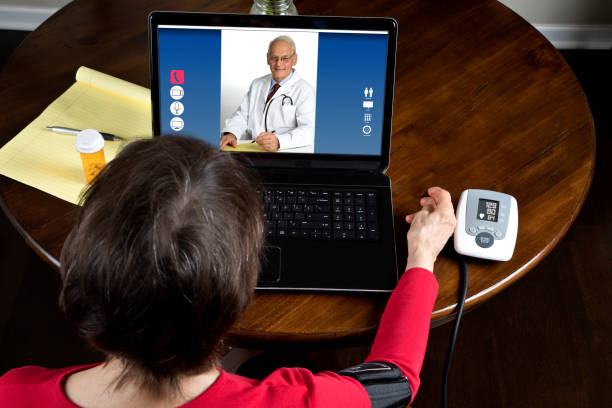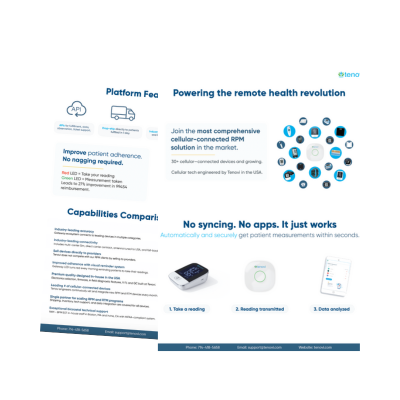Discover quick, insightful takeaways about remote patient monitoring. Whether you’re a healthcare professional, a patient, or simply curious about advances in connected care, Tenovi remote monitoring facts offers a concise and engaging way to learn. With 61 unique facts to explore, you’ll find valuable insights on everything from industry trends to emerging RPM and RTM technologies—designed to spark curiosity and inspire deeper understanding.
13 Remote Patient Monitoring Facts
So, if you’re ready to deepen your knowledge of telehealth and RPM, Tenovi’s Fast Facts About Remote Patient Monitoring is your go-to resource. Take advantage of this opportunity to stay informed, spark conversations, and be at the forefront of the latest advancements in healthcare technology.
These fast facts draw from various published sources and are frequently updated as new data becomes available.
1)
It is estimated that 10% of hospital admissions in chronic care are due to poor medication adherence, and these patients only follow their prescriptions up to 50% of the time. With and RTM pill box, patients can get timely reminders, track the dosage and frequency of their medication, and send alerts to their doctors, when medication is missed.
2)
Adventist Health Saint Helena Hospital, a rural hospital in northern California, expanded telehealth services during the pandemic. The hospital has a high number of rural and Latino populations. Therefore, the focus of telehealth in rural communities emphasizes social response and equitable access to health services.
3)
A study published in JAMA Psychiatry found that the availability of opioid use disorder-related telehealth services and medications during the COVID-19 pandemic was associated with a lowered likelihood of fatal drug overdose among Medicare beneficiaries.
4)
Baptist Ambulance in Tennessee launched a new Centers for Medicare & Medicaid Services (CMS) EMS telemedicine program in January 2023. The program is called Triage, Navigate, Treat, Transport (ET3) Model.
5)
A 2019 study of NewYork-Presbyterian Hospital’s mobile telestroke program reported that ambulances equipped with EMS telemedicine technology for treating strokes could shave 30 minutes off the average treatment time, potentially saving lives.
6)
Clinical guidelines strongly recommend remote patient monitoring for atrial fibrillation detection in stroke and non-stroke patients.
7)
MHealthIntelligence reported on an August 2022 study discovering that although there was scope for enhancement, an mHealth application effectively addressed short-term glycemic control and provided valuable assistance in managing care for individuals diagnosed with type 2 diabetes.
8)
Did you know “FDA clearance” is required to legally market and sell medical devices with fewer associated risks than FDA-approved devices? It is the most common regulatory pathway for remote patient monitoring devices. Companies receive FDA clearance when the FDA agrees that a device is substantially equivalent or similar to another FDA-cleared product. Only then can companies market medical devices as “FDA-cleared.”
9)
If you see a remote patient monitoring device marketed as “FDA-approved,” you can go to Devices@FDA Database and enter the device or company name to verify that device’s “FDA-cleared” status.
10)
An MSI study asked patients to prioritize the benefits of remote patient monitoring. Here are the findings:
- 43% valued the convenience of remote patient monitoring (RPM).
- 39% valued the care efficiency of RPM.
- 37% valued the control over personal health that RPM provides.
- 36% valued the greater accuracy of diagnoses achieved through RPM.
- 36% valued the peace of mind that comes with RPM.
11)
Physicians have been slow to adopt remote patient monitoring (RPM). A recent Medical Group Management Association poll of over 500 healthcare leaders revealed that 75% of medical practices still need to start offering RPM services.
12)
One rural Tennessee Teleoncology program study found that 95% of patients who initially had in-person visits and used virtual visits for half said the experience was as good as or better than in-person appointments.
13)
A remote patient monitoring study found a 37% reduction in hospitalizations for heart failure using CardioMEMSmonitoring.
Looking for More RPM Facts?
Visit The Tenovi Blog frequently for more digital health and wellness fast facts – a quick and easy way to enhance your knowledge of current facts about telemedicine and remote patient monitoring.


